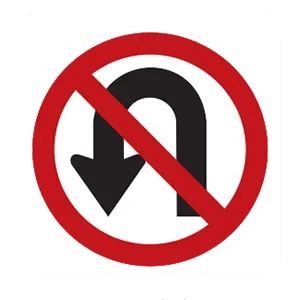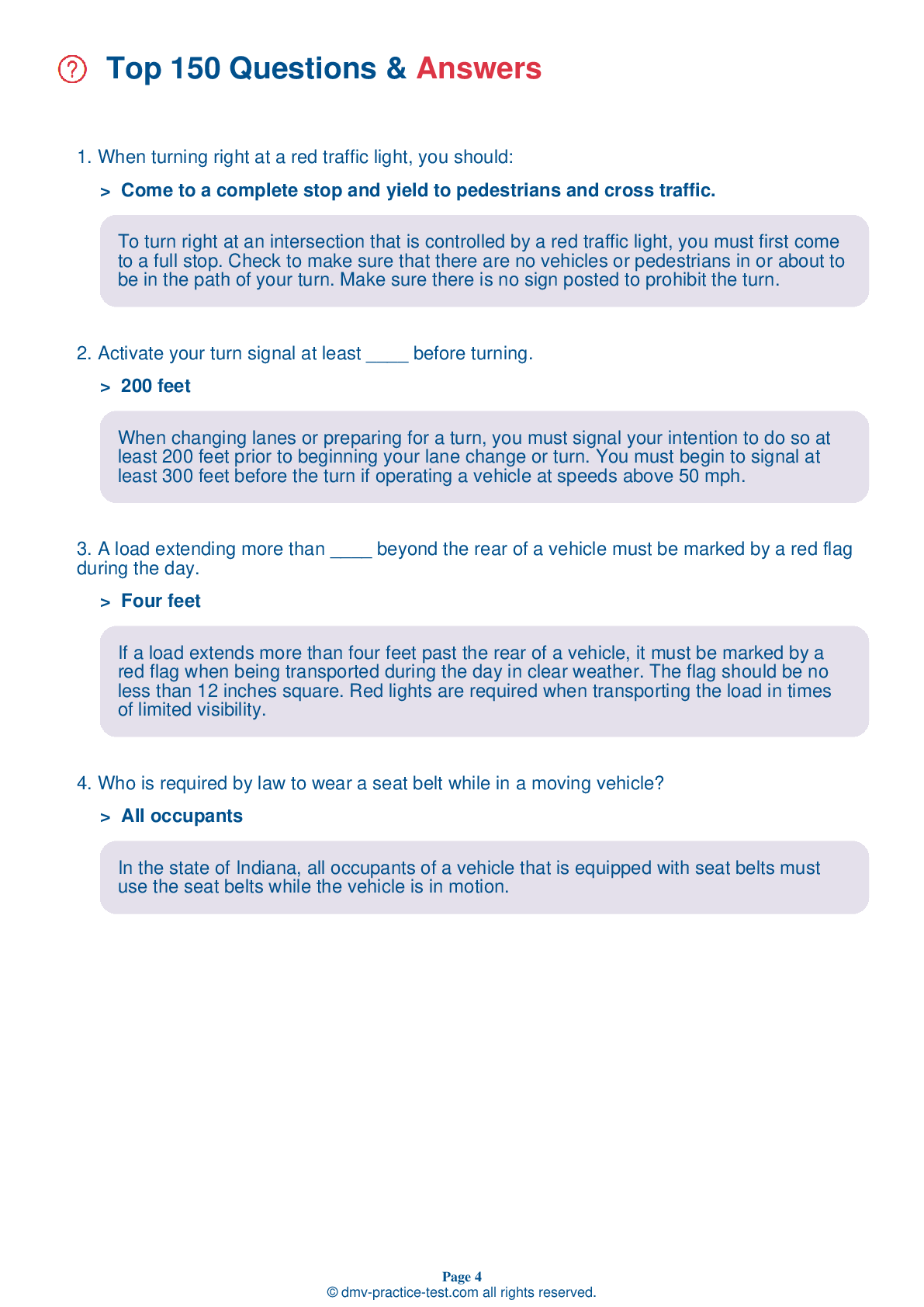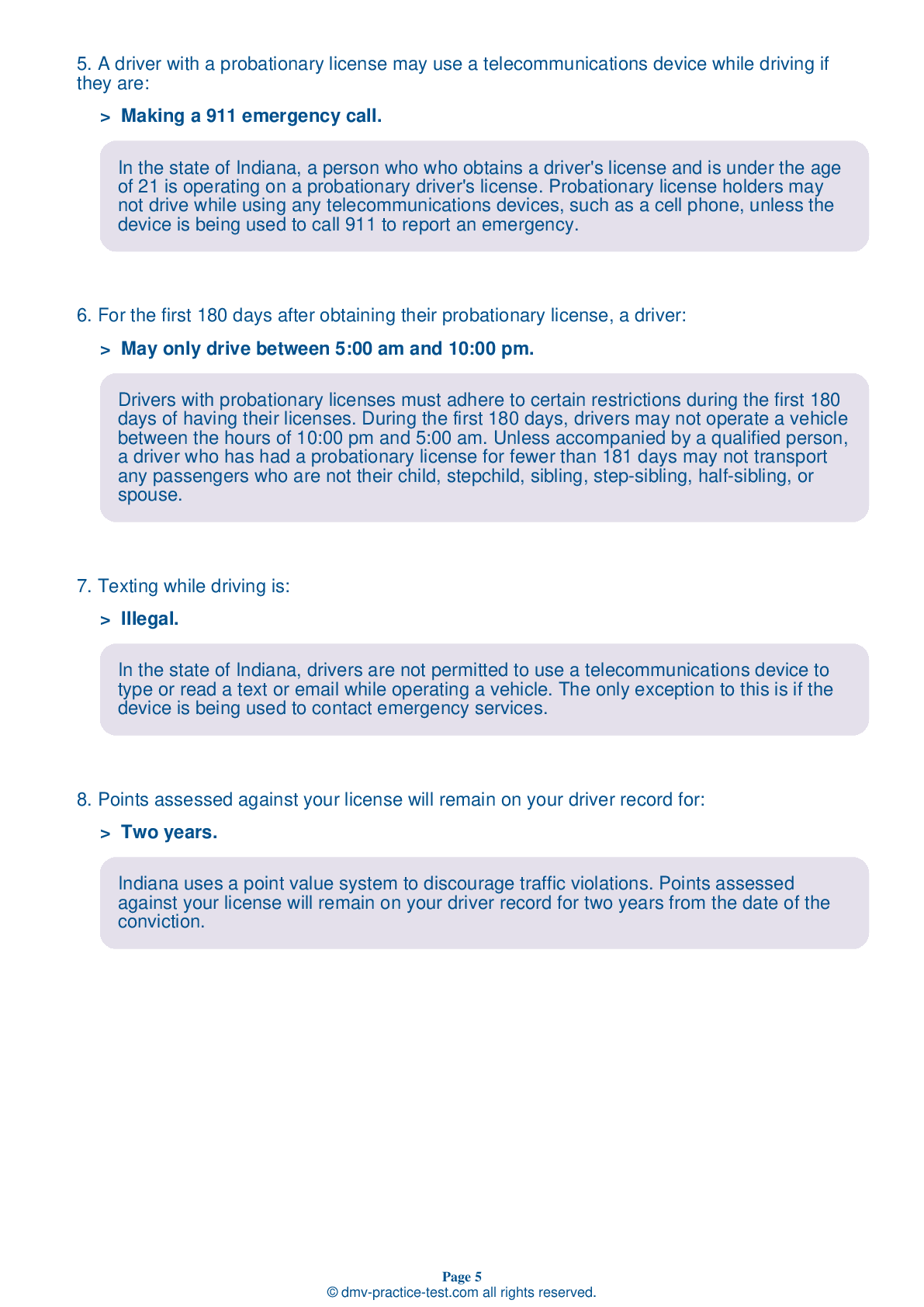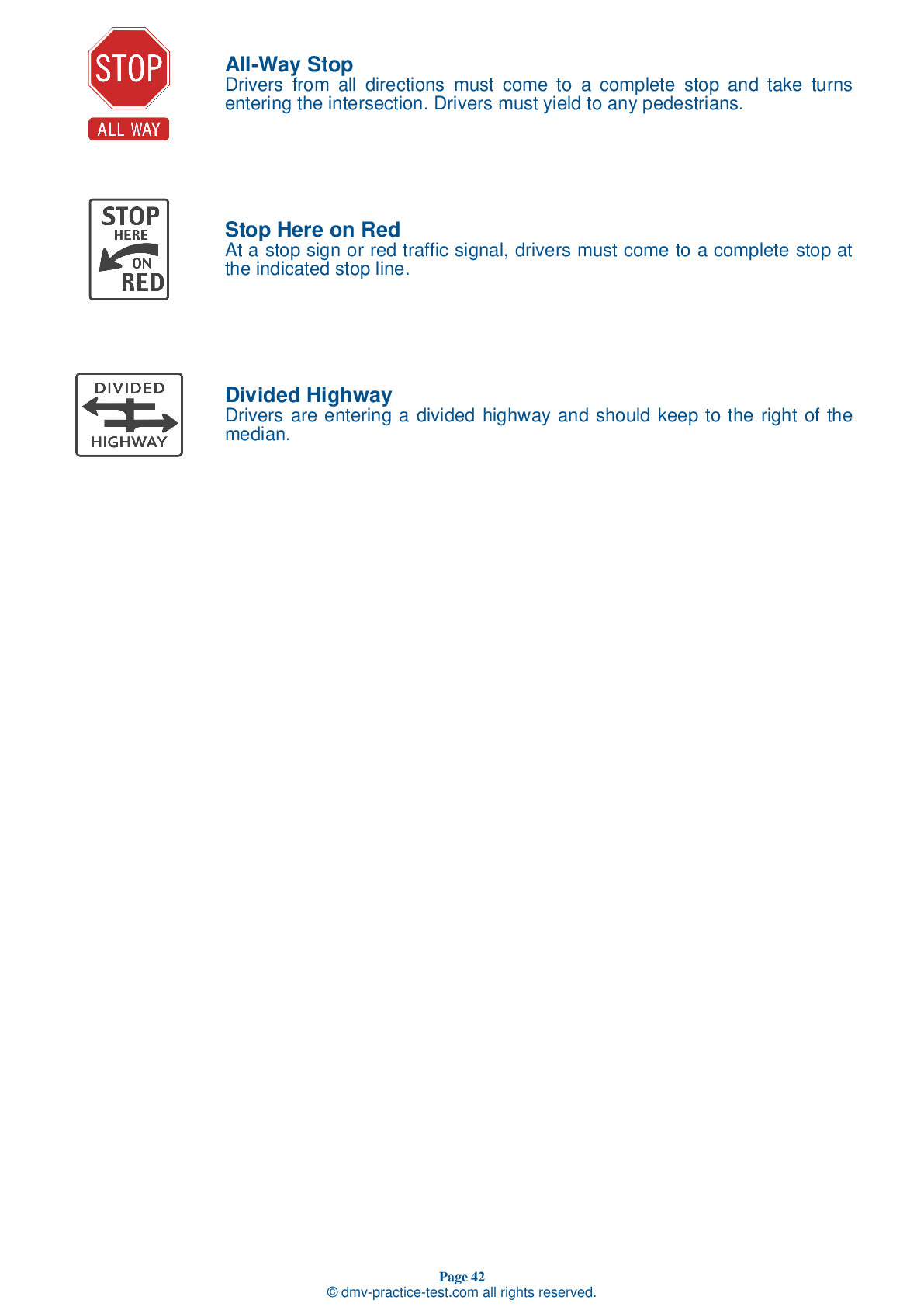FREE Indiana DMV Practice Test #8 Page 4 of 5
This set of Indiana DMV practise tests has been updated for January 2025. It includes questions based on the Indiana Driver Handbook's most significant traffic signals and laws for 2025. Use actual questions that are very similar (often identical!) to the DMV driving permit test and driver's licence exam to study for the DMV driving permit test and driver's licence exam.
On the practise exam, each question gets a tip and explanation to help you remember the concepts. The written component of the official Indiana DMV test will include questions about traffic rules, traffic signs, and driving statutes, as well as information from the Driver Handbook.
To obtain a passing grade, you must correctly answer 44 of the 50 questions. Take our DMV practise exam to help you prepare for your Indiana instruction permit or driver's licence.
The DMV exam is available in several languages.
Using any kind of testing assistance will result in an automatic fail, and the DMV may take additional action against your driver's licence, so stay away from it.
28 . Lanes of traffic moving in opposite directions are divided by ____ lines.
Yellow lines are used to divide traffic moving in opposite directions.
29 . This sign means:

Regulation signs regulate traffic speed and movement, displaying rules which drivers must obey. Wherever this regulation sign is posted, U-turns are not permitted.
30 . When changing lanes you should not:
Before changing lanes, check your side and rearview mirrors for traffic approaching you from behind. Use your turn signal to let other drivers know you plan to change lanes. Check for other drivers who also may be moving into the same lane.
31 . You are driving in the right lane of a multilane highway and want to move into the left lane. You should:
Before changing lanes, you should always verify that there are no other vehicles in the lane you want to enter by checking your mirrors and looking over your shoulder in the direction you plan to move. You should signal every time you change lanes.
32 . When driving on wet pavement, it's important to remember:
Wet roadway surfaces can be dangerously slick, especially immediately following a rainfall. When you are driving on wet roads, your vehicle is traveling on a thin layer of oil, dirt, and water. Slow down when there is heavy rain, standing water, or slush on the road to reduce the risk of your wheels losing traction on the slick surface.
33 . A leaking exhaust system can:
The exhaust system helps remove toxic gases, reduce the noise, and cool the hot gases coming from a running engine. Fumes from a leaky exhaust system can cause death in a very short time. They can also make you drowsy while driving.
34 . This sign means:




